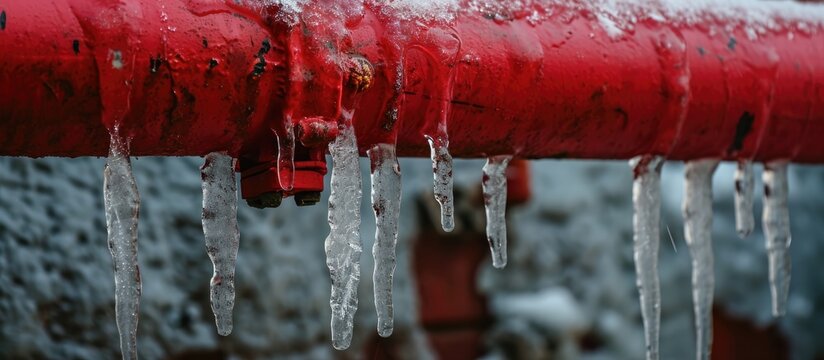Protecting Pipes from Cold Weather Damage: Key Approaches
Protecting Pipes from Cold Weather Damage: Key Approaches
Blog Article
The content on the next paragraphs on the subject of Preventing and dealing with frozen pipes is truly intriguing. Check it out for your own benefit and decide what you think of it.

Cold weather can wreak havoc on your pipes, particularly by freezing pipelines. Below's exactly how to avoid it from happening and what to do if it does.
Introduction
As temperatures decrease, the risk of icy pipes rises, possibly bring about costly repair work and water damages. Recognizing how to avoid frozen pipes is critical for property owners in cold climates.
Avoidance Tips
Protecting susceptible pipes
Wrap pipelines in insulation sleeves or use heat tape to secure them from freezing temperature levels. Focus on pipes in unheated or outside locations of the home.
Home heating strategies
Keep indoor spaces adequately heated up, specifically areas with plumbing. Open cabinet doors to permit warm air to flow around pipelines under sinks.
Exactly how to recognize icy pipelines
Try to find lowered water flow from faucets, uncommon smells or noises from pipes, and noticeable frost on subjected pipelines.
Long-Term Solutions
Architectural adjustments
Think about rerouting pipelines far from outside wall surfaces or unheated locations. Include extra insulation to attics, cellars, and crawl spaces.
Updating insulation
Invest in top notch insulation for pipelines, attics, and walls. Correct insulation helps keep regular temperatures and minimizes the risk of icy pipelines.
Protecting Outside Pipes
Garden tubes and exterior taps
Disconnect and drain pipes yard hoses before winter. Install frost-proof spigots or cover exterior taps with insulated caps.
Comprehending Frozen Pipes
What creates pipes to freeze?
Pipelines ice up when subjected to temperatures below 32 ° F (0 ° C) for extended durations. As water inside the pipelines freezes, it expands, taxing the pipe wall surfaces and potentially triggering them to break.
Threats and damages
Frozen pipes can bring about water supply disruptions, residential property damage, and expensive fixings. Burst pipes can flood homes and trigger comprehensive architectural damage.
Signs of Frozen Pipeline
Determining icy pipelines early can avoid them from bursting.
What to Do If Your Pipes Freeze
Immediate actions to take
If you suspect icy pipes, keep faucets open up to relieve stress as the ice thaws. Make use of a hairdryer or towels taken in hot water to thaw pipelines gradually.
Final thought
Stopping frozen pipes calls for aggressive procedures and quick feedbacks. By recognizing the causes, indications, and preventive measures, house owners can shield their plumbing during winter.
5 Ways to Prevent Frozen Pipes
Drain Outdoor Faucets and Disconnect Hoses
First, close the shut-off valve that controls the flow of water in the pipe to your outdoor faucet. Then, head outside to disconnect and drain your hose and open the outdoor faucet to allow the water to completely drain out of the line. Turn off the faucet when done. Finally, head back to the shut-off valve and drain the remaining water inside the pipe into a bucket or container. Additionally, if you have a home irrigation system, you should consider hiring an expert to clear the system of water each year.
Insulate Pipes
One of the best and most cost-effective methods for preventing frozen water pipes is to wrap your pipes with insulation. This is especially important for areas in your home that aren’t exposed to heat, such as an attic. We suggest using foam sleeves, which can typically be found at your local hardware store.
Keep Heat Running at 65
Your pipes are located inside your walls, and the temperature there is much colder than the rest of the house. To prevent your pipes from freezing, The Insurance Information Institute suggests that you keep your home heated to at least 65 degrees, even when traveling. You may want to invest in smart devices that can keep an eye on the temperature in your home while you’re away.
Leave Water Dripping
Moving water — even a small trickle — can prevent ice from forming inside your pipes. When freezing temps are imminent, start a drip of water from all faucets that serve exposed pipes. Leaving a few faucets running will also help relieve pressure inside the pipes and help prevent a rupture if the water inside freezes.
Open Cupboard Doors
Warm your kitchen and bathroom pipes by opening cupboards and vanities. You should also leave your interior doors ajar to help warm air circulate evenly throughout your home.

I was brought to that editorial about How to Prevent Your Pipes From Freezing from a buddy on our other web page. Enjoyed reading our article? Please share it. Let someone else check it out. Thank-you for your time invested reading it.
Request Estimate Report this page